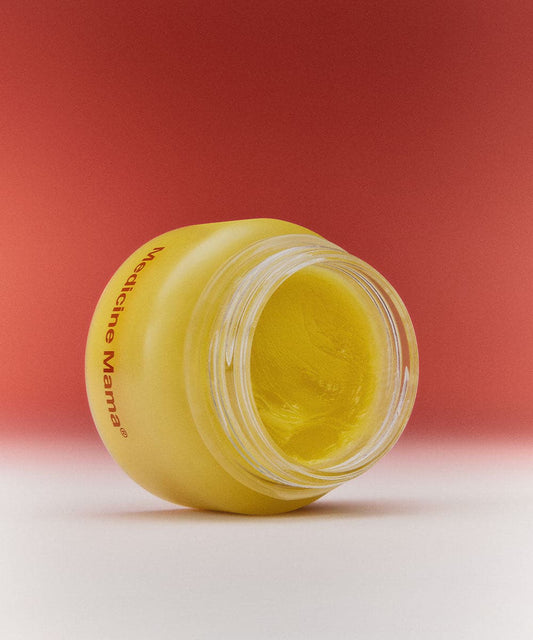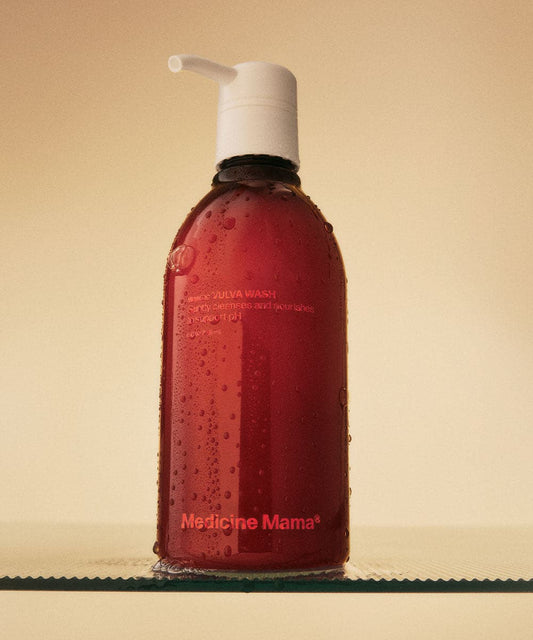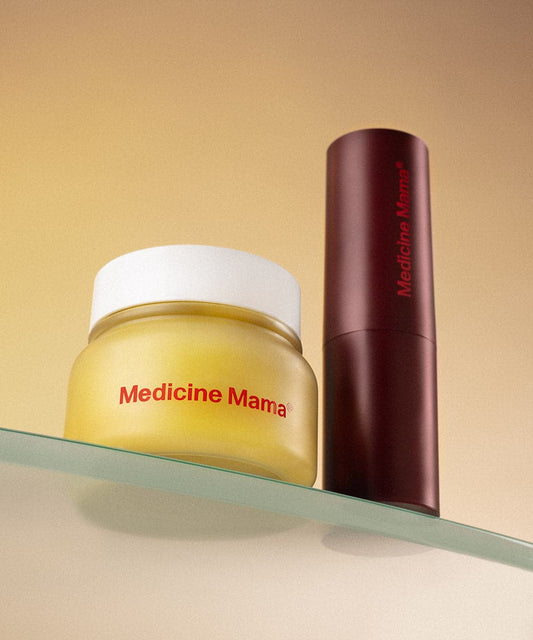Reviewed by | Dr. Clare Bertucio MD
Bartholin's cysts can be an uncomfortable and sometimes painful issue that many women face. These cysts occur when the Bartholin glands, located on each side of the vaginal opening, become blocked, leading to fluid buildup. Imagine dealing with a cyst right before a beach day or a big date night — suffice to say, it's not exactly fun.
While these cysts can sometimes resolve on their own, they may also require medical attention to prevent complications. In this article, we’ll dive into the best practices for managing Bartholin's cysts, exploring home remedies and medical treatments.
Whether you're facing a Bartholin cyst for the first time or looking for better management strategies, this guide is here to help you make informed decisions about your vulvar health.
What Is a Bartholin's Cyst?
The Bartholin glands are small, pea-sized glands on each side of the vaginal opening that secrete fluid to keep your vulva well-lubricated, especially during sexual intercourse. But sometimes, these ducts get blocked, leading to fluid buildup and forming a cyst.
Typically, this cyst starts as a painless lump near the opening of the vagina that you might not even notice at first. However, when the cyst gets infected, it can turn into a Bartholin abscess, a painful situation filled with pus. The size of the cyst can range from a tiny pea to a larger marble, causing discomfort and making everyday activities like walking or sitting a challenge.
Recognizing the difference between a simple Bartholin cyst and an infected Bartholin abscess is key to determining how to handle it, from home treatments to over-the-counter pain relievers like ibuprofen and acetaminophen and when to seek more advanced medical interventions. Understanding these options will help you manage this common skin condition effectively.
What Are the Complications of Bartholin's Cysts?
An infected Bartholin cyst, also known as a Bartholin abscess, can bring significant discomfort and health issues. Symptoms of an infected cyst include severe pain, swelling, redness, and even fever, making it hard to go about your daily life. If vaginal cysts are left untreated, the infection can spread, leading to more serious health concerns.
This makes it super important to get medical attention promptly. Infections can lead to a buildup of pus, causing more pressure and pain. There are several treatment options for an abscess, including incision and drainage, where a small cut is made to drain the fluid, or the insertion of a Word catheter, which keeps the duct open for continuous drainage.
In rare cases, a more permanent solution like marsupialization might be necessary. This surgical procedure creates a permanent opening to facilitate drainage.
Regular visits to your gynecologist and paying attention to symptoms are crucial for managing this condition and preventing it from coming back. By staying informed and proactive, you can handle Bartholin's cysts more confidently and comfortably.
Should You Burst a Bartholin's Cyst Yourself?
Self-treatment of a Bartholin's cyst, especially if it has turned into an abscess, is not recommended. It might be tempting to take matters into your own hands, but this can lead to several complications:
- Infection: Popping the cyst at home can introduce bacteria from your hands or non-sterile tools, potentially worsening the infection. This can turn a manageable cyst into a more severe Bartholin abscess, which might require antibiotics or even more invasive treatments.
- Incomplete Drainage: Without proper tools and technique, you may not fully drain the cyst, especially if it’s the type of cyst that might need surgical drainage. Partial drainage can leave fluid behind, allowing the cyst to refill and possibly become infected again. This often leads to a cycle of recurring cysts and abscesses, which can be frustrating and painful.
- Scarring and Recurrence: Improper treatment can cause scar tissue to form. Scar tissue can block the Bartholin duct, increasing the likelihood of future cysts. Each recurrence can lead to more extensive scarring, making future episodes more problematic. The process of marsupialization or other surgical procedures performed by a healthcare professional can help minimize scarring and reduce recurrence rates.
It's crucial to seek medical advice from a gynecologist or other healthcare providers if you have a Bartholin's cyst. They can offer safe and effective treatment options, including drainage procedures and catheter insertion to keep the duct open. In some cases, surgical options like marsupialization or even removal of the Bartholin gland may be recommended to prevent recurrent cysts.
Are There Safe Home Treatments for Bartholin's Cysts?
If you're dealing with a Bartholin gland cyst and seeking relief at home, there are safer methods to try. These treatments can help alleviate discomfort and promote healing without the risks associated with self-draining the cyst.
Warm Sitz Baths
A warm sitz bath is one of the most recommended home treatments for a Bartholin's cyst. By sitting in a tub filled with a few inches of warm water for 10 to 15 minutes several times a day, you can help reduce the size of the cyst and promote natural drainage.
The warmth of the water increases blood flow to the area, which aids in healing and provides soothing relief. Adding a small amount of Epsom salt to the water can further help reduce inflammation and draw out the infection.
Warm Compresses
Applying a warm compress to the cyst can also provide relief. Use a clean cloth soaked in warm water and apply it to the affected area for 10 to 15 minutes at a time.
The warmth helps soften the cyst and encourage drainage while also reducing discomfort. You can repeat this several times a day. Make sure the water is not too hot to avoid burns, especially since the skin around the vulva is very sensitive.
Over-the-Counter Pain Relievers
Pain relievers like ibuprofen or acetaminophen can help manage the pain and reduce inflammation associated with a Bartholin gland cyst. Ibuprofen is particularly effective as it also has anti-inflammatory properties, which can help reduce swelling.
Always follow the dosage instructions on the package and consult with your healthcare provider if you have any concerns about taking these medications. Over-the-counter options are convenient and can provide significant relief, making it easier to manage the discomfort until the cyst resolves, or you can seek further medical treatment.
Can You Prevent Bartholin Cysts?
Preventative measures can help reduce the risk of developing Bartholin's cysts, ensuring better overall vulvar health and comfort.
Wear Loose Clothing
In addition to these home treatments, maintaining good vulvar hygiene and avoiding irritants can help prevent the cyst from worsening. Wear loose-fitting clothing to reduce friction and avoid using scented products around the genital area.
Improve Your Hygiene Practices
Maintaining good vulvar hygiene is essential for preventing Bartholin's cysts. Clean the genital area daily with mild soap and warm water, avoiding harsh chemicals or fragrances that can irritate sensitive skin.
One effective product for daily cleansing is VMAGIC® Vulva Wash. This gentle, fragrance-free cleanser rejuvenates and nourishes the skin while helping support the natural pH of your vulva.
This calming, vulva-safe formula washes and moisturizes intimate skin without foaming and is gentle enough for daily use. The absence of fragrance, a common irritant, respects the delicate nature of vulvar skin. By incorporating VMAGIC® Vulva Wash into your daily routine, you can maintain cleanliness and prevent irritation that might lead to cyst formation.
Safe Sexual Practices
Practicing safe sex is crucial in preventing sexually transmitted infections (STIs) like gonorrhea and chlamydia, which can contribute to the formation of Bartholin's cysts. Using condoms and other barrier methods during sexual intercourse helps reduce the risk of STIs, protecting your overall genital health.
Regular STI screenings are also important, especially if you have multiple partners or suspect exposure to an infection. Open communication with your partner about sexual health and STI prevention can further safeguard against these infections.
Stay Hydrated and Moisturized
Staying well-hydrated and maintaining a balanced diet is vital for promoting overall health and preventing infections that could lead to Bartholin's cysts. But hydration is not just about drinking water; it also involves keeping your skin moisturized to prevent dryness and irritation.
Incorporating VMAGIC® Vulva Balm into your routine can help maintain vulvar hydration. This organic, hormone-free moisturizer relieves dryness and irritation caused by menopause, postpartum, sexual activity, and grooming.
To use, scoop out a small amount of VMAGIC® Vulva Balm with clean, dry fingers and massage it into the vulvar skin, including the inner and outer labia, clitoris, vaginal opening, or mons pubis. Use it daily for hydration or anytime you need relief from vulvar dryness or discomfort.
Empowering Your Vulvar Health
Understanding Bartholin's cyst causes and the proper treatment options is key to managing this common women's health issue. While home treatments like warm sitz baths and pain relievers can provide relief, it’s important to seek medical advice if the cyst becomes painful or infected.
There are ways to manage this type of blockage at home, including with painkillers and by generally looking after your vulvar and vaginal wellness, but generally, you should seek medical assistance to treat this common condition rather than taking it into your own hands.
Sources:
Bartholin’s Cyst Treatment | NHS
Anatomy, Abdomen and Pelvis: Bartholin Gland | National Library of Medicine



